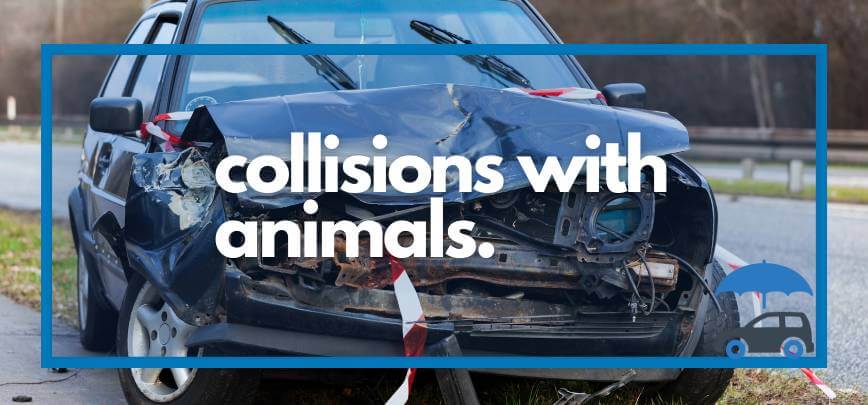
How To Prevent Collisions With Animals And What To Do If It’s Too Late
The May 2-4 weekend is the unofficial start to summer. Many Canadians choose to usher in the long weekend with a trip up to cottage country. Although the commute up North is a beautiful scenic drive, it is also a place where collisions involving large animals are reported every year. The Ontario Provincial Police estimate they see 14,000 reports a year involving car accidents with animals. That’s the highest number reported in all of Canada!
Not only do these car accidents harm the wildlife but hitting a large animal such as a deer or moose can cause serious damage to your vehicle or bodily harm. In this blog, we outline how to prevent a collision with an animal, what to do if you have an accident and how it can impact your insurance.
Tips to minimize the risk of a collision
Although some accidents with animals are unavoidable, here is a list of preventative measures to help you and the animals stay safe.
- Your best defence when driving through the countryside is to avoid driving at dawn or dusk. This is when wildlife is most active and likely to be seen roadside.
- This may seem obvious but keep your eyes on the road! Note for yellow wildlife signs alongside the road, stay alert and free of distractions and be aware of your surroundings. Roads that hug the treeline can be particularly dangerous so make sure to be mindful of your peripheral view. This is especially true when driving alone, but if you have a passenger on board, also ask them to be alert for any signs of animals.
- See and be seen. When driving at night, use your high beams when passing through dimly lit areas. Not only will your headlights reveal more of the road, but they also illuminate the animal’s eyes. Note; when passing other vehicles on the road make sure to turn off your high beams!
- Mind your speed. We don’t need to explain why it’s not recommended to be speeding on the windy, poorly lit roads up North! When travelling at the appropriate speed, you have a better chance to react when confronted with an animal. If you spot an animal ahead, slow down and brake smoothly at a distance. Remember animals can be unpredictable and it’s best not to get too close.
- Be alert. Don’t drive while drowsy or under the influence of alcohol/cannabis.
If you have made contact with an animal, what’s next?
Although it may be counter instinctual, if you cannot avoid a collision from happening, it is recommended to drive straight towards the spot the animal came from instead of where it is going. By maintaining your direction, you reduce the risk of swerving into oncoming traffic with another vehicle, or higher impact with the animal itself. If a collision does occur, your main priority is ensuring the safety and well-being of yourself and others in the car.
Depending on the severity of the accident and the type of animal involved, you will need to call 9-1-1 to report the incident.
How does this impact your insurance?
An accident involving a large animal can cause considerable damage to your vehicle. If you have physical damage coverage as part of your auto policy, the cost of damage is likely to be covered. This is optional coverage and not a part of a standard policy.
Generally, hitting an animal will not affect your auto insurance rates. It is typically deemed as a not-at-fault accident and paid out by the insurance policy. However, the situation would change if an animal causes you to swerve off the road and get in an accident with another car. Talk to your Merit broker to discuss how this would impact your premiums.
Getting into any type of car accident can be scary. But a collision with a wild animal can be particularly jarring. If you are heading up North this long weekend, make sure you have the right coverage to protect you in the event of a collision with an animal. If you have any questions or want to update your coverage, reach out to your licensed Merit broker.



